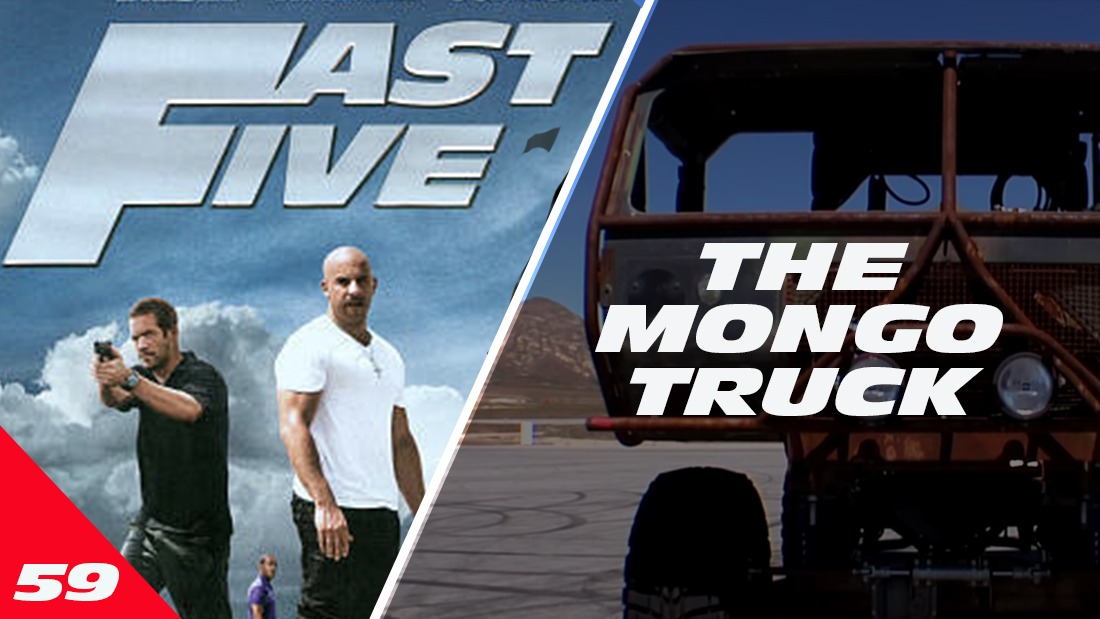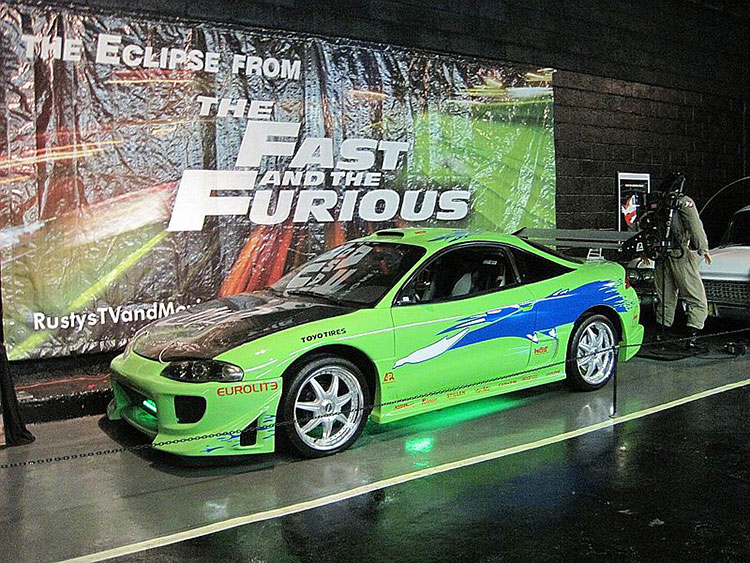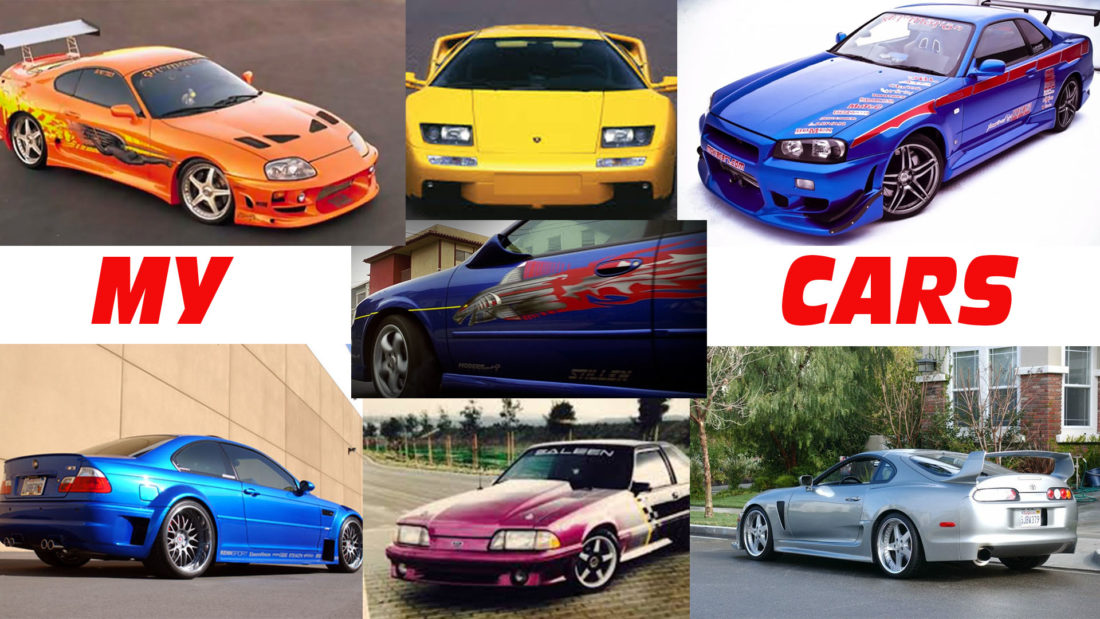The Fast and Furious Cast: Where Are They Now?
The Fast and Furious Cast: Where Are They Now? If there’s one question on The Fast and Furious film fanatics' minds, it’s where are the stars now? Released as the new millennium was getting under full swing (feel old yet?) in 2001, the first film was a huge success, grossing a whopping $207 million compared to its $38 million budget. Over the past two decades, the franchise has been churning out sequel after sequel. In fact, the 10th film is on its way in 2023. Many of us fell in love with some of the characters like Dominic Toretto (played by Vin Diesel) and Brian O’Connor (Paul Walker). With that in mind, you’re surely wondering what the stars are up to now and whether their lives have changed somewhat since the first film. Here are what the cast are up to these days. Vin Diesel (Dominic Toretto) Before joining the Fast and Furious extravaganza, Vin Diesel had famously appeared in an array of blockbuster films, including Boiler Room, Pitch Black, and Steven Spielberg’s Saving Private Ryan. The actor even lent his voice to The Iron Giant. What we can say for certain is that once joining Fast, his career changed overnight. In 2022, Diesel
How Brands Can Market Their Products in Movies
How Brands Can Market Their Products in Movies Movies have a great impact on human psychology. They influence our attitudes and buying decisions. Marketers know this, hence the popularity of product placement today. Statistics show that companies’ global spending on product placement reached $23 billion in 2021. This figure is expected to go up further as more marketers continue to cut down on traditional advertising expenditure. But you need a great strategy to succeed at product placement. Your audience may have the wrong interpretation if the movie storyline doesn’t align with the product. According to one study, pairing the right product with a successful movie can bring up to 89% ROI. Here are four tips brands can use to market their products in movies. 1. Know Your Audience Movies are categorized into genres. Different genres appeal to different people based on specific demographics like age and gender. For instance, many men love action movies and are more comfortable watching horror films than women. Some movies also appeal more to older people than the younger generation. Know your target audience before you approach any movie marketing agency to get your product featured in a film. Viewers will remember your brand more if the product aligns with
Top 10 Tips on How to Buy a Cool Car
Top 10 Tips on How to Buy a Cool Car Yet another of my favorite questions, I could easily write 5000 words on the tools, tricks, techniques and evaluation criteria I use personally when buying a car. Let's go into this discussion acknowledging that a lot of people will buy a car just like they pick a girlfriend - considering looks only, and forgetting about the many issues hiding within. For those people, I can't help you. You're going to make a decision based on emotion and most of the time, you'll get burned, so just buy what you want and don't bother reading these tips. For those who are not led around by the wrong piece of your anatomy, read on. 1) Start with a realistic assessment of your finances. How much cash do you have RIGHT NOW in your bank? What's your credit score? Are you financing? How much can you afford each month? If you don't start with this step, you're wasting your time and the time of sellers. 2) Next, you must assess how you will be using the vehicle? Is it a daily driver? Are you commuting long distances? (ex. 50 miles or more round trip, daily)? Will it
The Mongo Truck from Fast Five
https://www.youtube.com/watch?v=pT2gsN4EXCc&t=197s Fast Five Mongo Truck from Fast Five Hello again, Fast fans, Craig Lieberman back with ya. This week, I’ve answered the many requests to learn about this vehicle. Riddle of the day: what’s old, rusty and goes anywhere it wants? Harvey Weinstein’s wiener? Nope. It’s the Mongo truck from Fast Five. Officially dubbed the Heist Truck, it was yet another creation from Dennis McCarthy’s brilliant picture car team, and this thing was purpose-built to reek havoc. By Fast Five, all semblances of the street racing culture in these movies have been cast aside in favor of heist movies. As was the tradition with Hollywood’s Picture Car industry, tuner cars were cast aside in favor of big ole, V8 muscle cars and trucks. Cause we Americans love them, there big block Chevys, small block Fords and pick em up truck. The result? Universal stopped building show cars for these movies and started building all the cars pretty much as stunt cars. In other words, they would be these cars with whatever stunts they had planned for them in mind. The build plan basically followed the action sequences written into the script. In Fast Five, Universal needed a way to hijack and offload cars from a moving train. Since no production vehicle could do
Fast & Furious: Stunts That Went Wrong
Fast & Furious: Stunts That Went Wrong This is video about some of the stunts that went wrong on some of the Fast and Furious movies. https://youtu.be/PzNAxnq78f4 STUNTS THAT WENT WRONG It’s hard to argue that the Fast and Furious franchise is now the undisputed king of car related stunts. After 20 years and eight movies so far, we’ve seen cars launched into the air, driven off a cliff, dropped from parking garages and crushed by a tank. The action sequences in the more recent Fast movies are seemingly designed just to dispose of unwanted cars. As of this writing, we’re waiting on the release of Fast 9, which has promised to have a sequence in space. Whether a car is involved or not is anyone’s guess. Even fans of other car movies like Bullitt, Gone in 60 Seconds, and Ronin have to be impressed by the stunts in the Fast movies. Sure, more advanced CG helps, but the stunt teams on the Fast movies make the practical shots look spectacular. And while CG is playing bigger roles in movies these days, action movies are nothing without stunt people. Since the earliest days of movie making, stunts have been part of our favorite movies. These men and women make stunts seem
The Fast and Furious: Rejected Cars
The Fast and Furious: Rejected Cars In this video, I cover the cars that were rejected for the first movie. Basically, why we picked what we picked and why some cars were ruled. Full transcript below the video. https://youtu.be/qKxAyErDPZ4 VIDEO TRANSCRIPT REJECTED CARS FROM THE FAST & THE FURIOUS What would have happened if this car had replaced the Supra as the main car in the first Fast and Furious movie? Would Supra prices still be so crazy? What if Johnny Tran drove a Mustang instead of an S2000? Would Race Wars spectators have been run over? This and more in a moment. OPEN: There have been many great cars in the Fast & Furious movies over the years, but the cars from the first movie have become icons. Some of them have sold for insane prices at auctions after the film’s main star, Paul Walker died in 2013. The manner in which cars are normally chosen for a movie goes something like this: the Director, Producers and the Picture Car Coordinator discuss the options and a decision is made based on a myriad of factors. The car needed to fit the character, it needed to be suitable for the action sequences written into the script, and had to fit into our meager
Fast & Furious Technical Errors Explained
There were plenty of things Universal got right, but with a project this unique, you had to expect that a couple of things might've slipped through the cracks. In this video, I try to explain the errors and how they came to pass. https://www.youtube.com/watch?v=DQnYJa4U-nQ&list=PLCOhVHzNDzFBfdMwHG5I10mHRW8wPBB_U&index=1&t=52s Fast & Furious Technical Errors Explained
Fast 10 and Fast 11 Approved
Fast and Furious 10 and Fast 11 Approved It should be no secret that the Fast and Furious will be going into a tenth installment - I've been saying this for years. But now it seems, an eleventh film will wrap the franchise as we know it. We've known for many years that the Fast and Furious movies would likely go all the way to a tenth film - Vin Diesel has long had the option written into his contract, according to sources. However, getting to “Fast 10,” will be meaningful symbolically. Diesel recalls a 2013 interview in London with Walker, whom Diesel refers to as "my brother Pablo," before his co-star's death: "He was always tickled by the fact that we were continuing. He was always so excited and so proud that his brother was thinking of these films before the studio, and even before anyone knew that there was another one coming and another one coming and that the stories had been worked out for him. He took great pride in that.” During the interview, Diesel says Walker asked him, “Vin, how many more do you think there will be?” Diesel’s response: “The question is, is it seven, eight, nine, or seven, eight, nine, 10?” “And
How to Build a Replica Fast and Furious Car
Perhaps the most repeated question I get is this one: How can I build a replica Fast and Furious car? There isn't one answer to this question because obviously, it depends on which car you're trying to build. If you're trying to replicate one of the cars from any of the movies AFTER Tokyo Drift, it will be MUCH easier because most of the cars from Fast 4 onwards were little more than tires, wheels, mufflers and some parts needed to perform stunts. So for the sake of this article, let's focus on the idea of building a replica of one of the cars from the first three movies. Spoiler alert: it'll be a multi-year project and will take tens of thousands of dollars and literally THOUSANDS of hours scouring the internet for every classified sale page on the internet - Ebay, Facebook marketplace, ModFinds, individual Facebook Classified pages and so on. BUDGET: If you want to build a Supra replica (from the first movie) or a GTR replica (from the second movie), you better have $100,000 cash in your hand, right now. And no, an 18-year-old kid is not going to get a $150,000 loan from a bank to build a 20-year-old movie
The Cars I’ve Owned
I've resisted the temptation to post this mostly because I don't want people to think I'm bragging. However, if you look at the list, there's hardly much to brag about. I imagine my story isn't much different from those who follow me on social media: I started with a hand-me-down car, which I promptly modifying. I eventually learned that trying to fix up a crummy car with almost no available aftermarket parts make such an endeavor a very poor choice. I learned quickly, however, and moved on to cars that were wholly embraced by aftermarket performance parts. Having grown up in the 1970s, my school's parking lot was full of American iron - Chevelles, Mustangs, Monte Carlos, Buicks, Chevy Vegas, Chargers, Satellites, Cudas, Camaros, and other cars. I've ridden in pretty much every car ever sold in America from the model year 1964 to 1988. By the time I got my driver's license, I already knew that the 1970s and 1980s were a dark time for cars. Laden with restrictive smog equipment, these cars were choked. For the 1978 Pontiac Trans Am (from Smokey and the Bandit), horsepower came in at 185, and torque was 320-lbs.ft., measured at the flywheel (in California). American cars of







